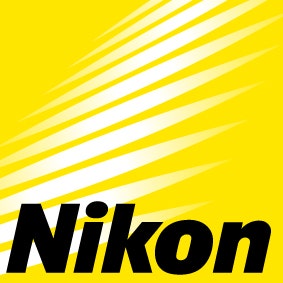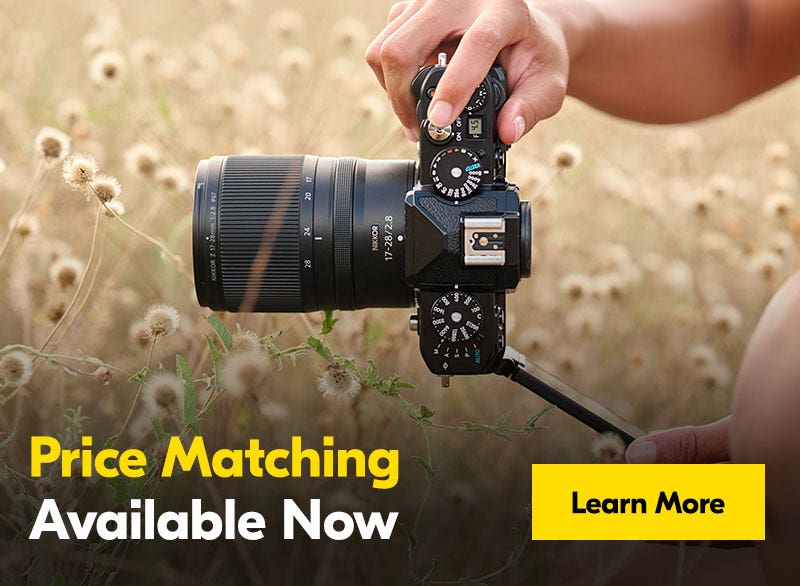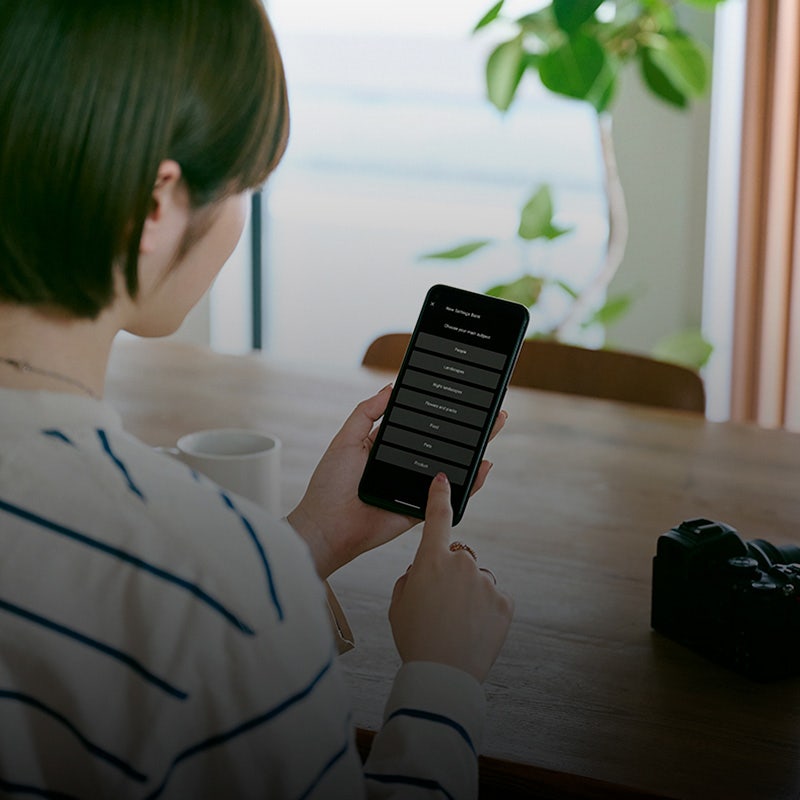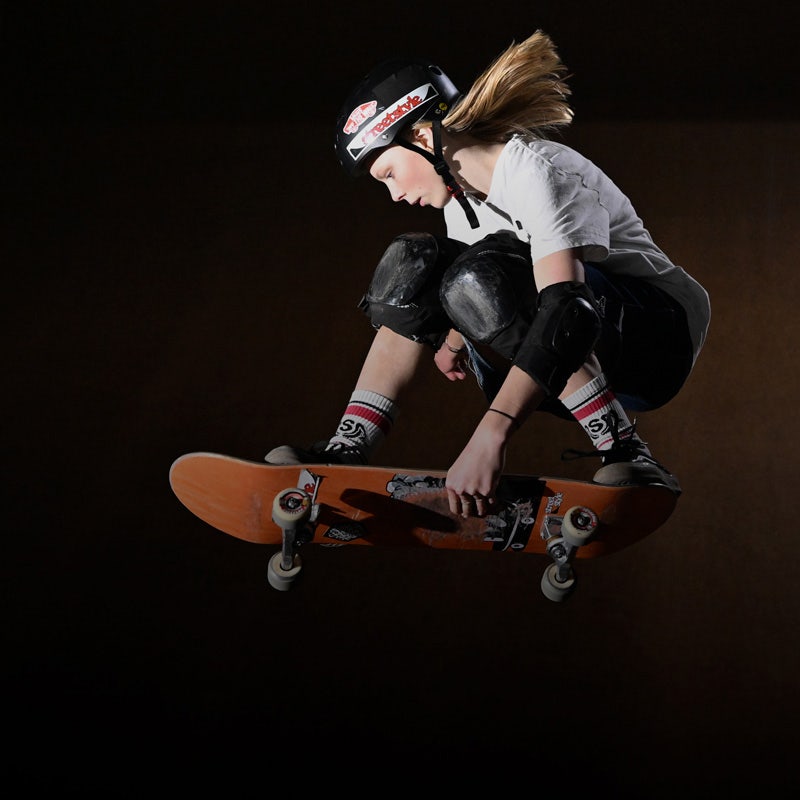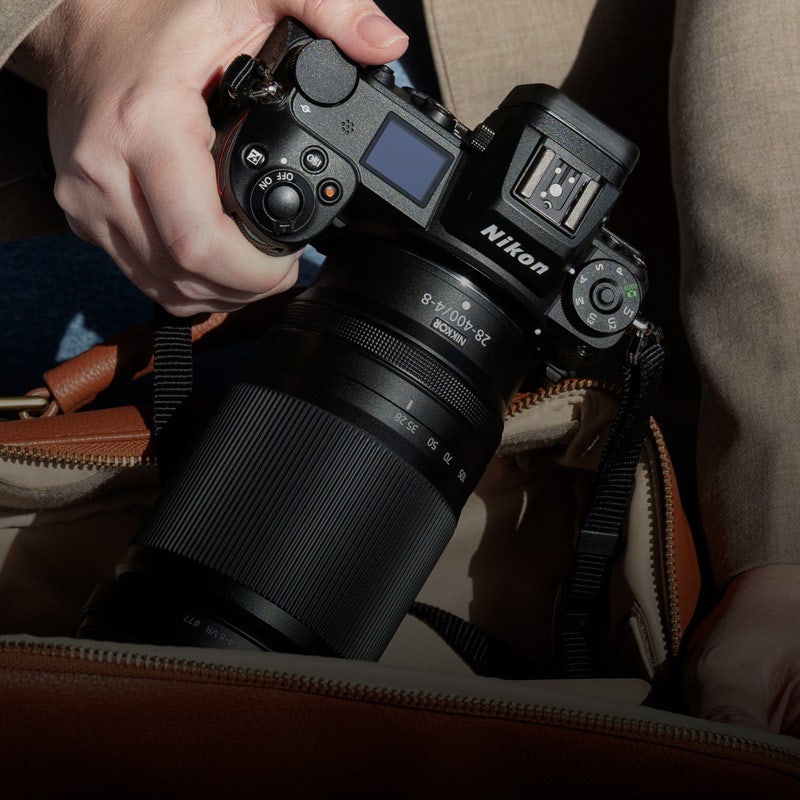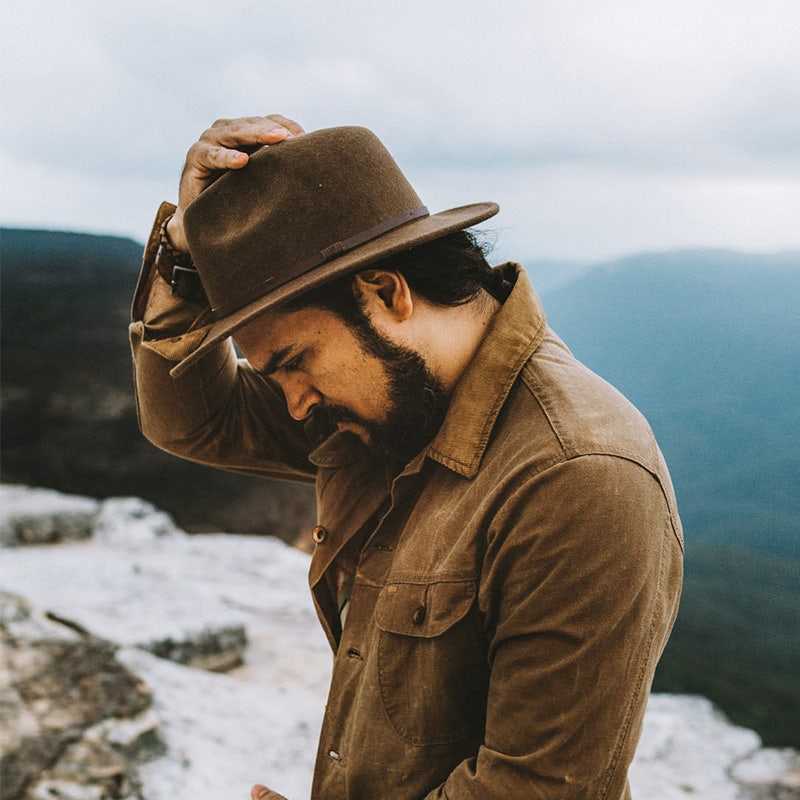Vaida Savickaite - Self-starting from Scratch
Travelling the photographic world from Lithuania to Australia.


In a relatively short amount of time, Lithuanian-born Vaida Savickaite has carved out a thriving artistic life in her new home of Sydney. Arriving in the country six-and-a-half years ago with nothing but a list of things she always wanted to do, Vaida is now bombarded with hospitality, travel and lifestyle clients wishing to harness her eye for the enticing.
Vaida is spirited and instinctual in her work, filtering her subject and the environment around it from every possibility until inspiration strikes. Her images are mouth-watering, aspirational and cause viewers to come down with a severe case of FoMO. It’s no wonder that luxury businesses continue to beat down her door.
We caught up with Vaida while she was holidaying in Bali, taking a well-earned break from bringing her signature spin to the industry.
What is your first memory of, or experience with, photography?
I grew up in a small town in Lithuania, where back then, people rarely travelled around or had cameras. Then, one day, I think my sister and her husband got a camera and actually went travelling. I thought to myself: one day, when I grow up, I want to have a camera, I want to travel, I want to take photos, I want to be kind of like my sister [laughs].
Years later, when I wanted to have a camera, my sister tried to talk me out of it. She was like: “it’s heavy, you don’t want to carry it around!”
How old were you, at this stage?
I wasn’t young! I was already in uni, I think. 18, 19, 20? I don’t know!
And when you started playing around with that camera, did you fall in love pretty quickly or did it take you a while?
I didn’t get a big camera. I just got a tiny pocket camera just to see if I liked it. I ended up carrying it everywhere. It’s like these days, when people have their phones and take photos everywhere… I had my little camera and was just taking photos of everything.
Like, a little digital point-and-shoot?
Yep, I don’t even remember what it was. Some little pocket camera.
After three years of uni I went to the States for a summer and then, instead of sending emails to my friends and family and telling them what I was up to, I started writing a travel blog in my native Lithuanian language.
At some point, I noticed that somehow this blog wasn’t only being read by family and friends. It was very fast growing. I think it was linked on Facebook, but it was definitely before social media became big. Before Instagram or anything.
How long ago was that?
It was around 2010.
How did you respond to it getting views outside of family? Did it push you to work more on it?
I was like “there are actually a lot of people reading and commenting and I have no idea who they are, interesting”. I just thought that maybe I should take it a little more seriously. Put a bit more effort into the photos. And into the writing.
So, yes, that’s how I got into photography in the first place. Just travelling the world and blogging and taking photos for my blog. Writing stories, sharing stories.
Do you still maintain that blog?
I do. 12 years later and I actually still have it. It’s crazy. I don’t maintain it as much. I used to write at least once a week, now I may write something… once a month? Or two months?
It must be nice to have that record of where your career started. So that you can look back and see how far you’ve come?
Yesterday, we were in Gili Trawangan, and I was there in 2012. I thought: I don’t remember this island. It has changed. So, I opened the blog post that I wrote 10 years ago to compare the photos and compare experiences and see “is this the same island?”.
And what you saw yesterday didn’t look like the photos from a decade ago?
No, it’s changed so much!
A lot of people are interested in travel photography. You say you travelled the world in those early years, before you were a professional. How did you fund that process?
Now, that I’m based and work in Sydney, when I travel it’s usually just for a holiday. Back in the day, I would find seasonal jobs, in winter, somewhere in the Alps. So, I would spend the winter season in the Austrian or Swiss Alps, working in hospitality. And then in between seasons, I have money, I have no job, I can go travelling until next season. That’s what I did in my 20s.
I’m guessing that was a lot of fun.
It was. It was.
After the blog when you decided to take photography more seriously, what was the next step?
I was living in Austria and Switzerland, but I always wanted to go to Australia. I guess many young people have a dream of going as far away from home as possible. So, I always wanted to come here, and then I had a bad snowboarding accident. I was like, okay. Your life can change so quickly. For me, it was like a massive lesson to start doing things that I always wanted to do instead of waiting for something to happen. So, I’m going to Australia because it’s what I’ve always wanted to do.
I came here, alone. No friends. Without knowing a single person. Okay, what am I going to do here? My English wasn’t good. I needed to find a way to work, but also a job that I liked doing. So, I got a piece of paper and just wrote down all the things I like doing, all the things I’m good at, things I would like to be doing. And how can I make money from it?
One of the top things on my list was photography. Also, I didn’t have to have perfect English for that! So, I decided to focus on photography.
Deciding to choose photography and make it work is one thing, but you must have made some smart decisions to actually make it work?
Looking back, it was probably a smart and silly thing to do. I never studied photography. I didn’t know anyone. I had no contacts. But I think I just started doing by doing. Initially I sent probably over 100 emails to venues around Sydney asking if I could come and take photos for free, for my portfolio.
I think I got around 10 responses. Around six of them said they weren’t interested. But I got a couple that said why not, let’s try. I just started getting out there and putting myself into very uncomfortable situations and taking photos. Learning, failing, trying again, until…
I got one client and then another client, then a third client. Over the years I got more experience and confidence.
The learning and failing and trying again is important.
Yes. At the beginning I had my camera broken. I dropped my favourite lens. I wasn’t only struggling to get my first clients; I also had all those technical issues. And no business background. I had no idea how to deal with any of it.
But if you really want something and you really work for it, it pays off at some point.
Are you at the point now where you don’t even have to think about finding new clients?
Not really.
It just comes to you?
It just comes to me. I have quite a few regular clients who contact me every month, every three months. There’s a cycle. I’m very grateful for those clients – that they trust me and they come back.
Then at the same time, there is always someone new reaching out.
That’s great. That’s where you want to be.
As a freelancer, that’s definitely where you want to be.
Let’s get to food photography. I’ve always wanted to ask this: has food ever been brought out and you’ve felt it doesn’t look quite right, or doesn’t look perfect?
Yes, sometimes. The good thing is I’m not shy anymore. To say to the chef “hmm, this doesn’t look right. Can we add some textures to that?” or “there’s a bit too much sauce. I can take the photo, but it doesn’t look that great”. I’m just not shy anymore to give my opinion.
[Thinks, squints, smiles]
It’s not that I say the food looks bad. I just say it may not look great in the photo.
That’s a great place to get to, where you know what you bring to the table – figuratively and in this case literally. Is there a certain aspect of photography you enjoy the most?
I like when I can control the scene. I don’t really do portraits or weddings or anything. I like when I can control the scene and spend more time trying different angles without the subject moving too much. [Laughs]. That’s what I like the most.
I started with food and drinks and hospitality, but after doing this for a couple of years, I felt that to keep it interesting and exciting, I wanted to do something else to mix it up. I started focusing more on interiors, accommodations and travel photography. It’s not only food and Instagram, but food and Instagram is where I get a lot of my work.
And with interiors, lifestyle and travel, do you feel satisfied and inspired for the moment?
At the moment I’m happy with what I do. I have a nice balance of different subjects and clients. But you know, you’re always changing and you always want to do something better, so I’m not going to settle with or get stuck where I am. At some point I’ll do something different.
You said you still occasionally update your blog, but do you take many photos for yourself these days, outside of work?
I definitely don’t take as many as I used to. Before I left for this holiday I’m currently on, I thought: should I still take my camera? I still took my camera.
And have you used it?
I’ve used it. Yeah. But there is no pressure. No brief. No-one that I need to show those photos to. It’s different.
I just assumed that because you are currently in Bali, and because of your current background [behind Vaida in her Zoom window was a thatched hut], that you were working?
No, actually!
You have been travelling around recently as a storyteller for Riparide. Can you tell us a bit about that process?
They’re a good company. I like being a storyteller there. You get sent on different assignments and always get to explore something new and unusual, especially if you go outside of the typical destinations. And you get to stay at some really nice places [laughs].
I like creating stories. I like shooting beautiful properties. I like noticing how I feel when I get to a place and capturing that through details.


Do you go into a property or the area around a property with a plan, or do you rely purely on instinct?
I do research. I think about what story I’m going to tell, depending on the property and the area – whether it’s a beach-life story or set in the mountains, or the countryside. I’ll research the local environment and figure out what the story could be.
But you never know exactly what you’re going to do until you get there. When I get to a property, first thing I do is just walk around with my phone, looking at what I like. Taking photos of my first impressions. "This is nice, this is nice, this is nice."
Then, I start thinking. "Ok, what light is better? Is it better to wait for the evening? Or morning light? Which lens am I using? Is it a wide shot? Another lens for close-up of that detail?"
Once I know how I’m going to shoot it, I start thinking what activities we can do there. Breakfast. Wine outside by the fire. Activities that will bring out the best in the accommodations.
Where was the last place you visited and created a story?
Oh, it was beautiful! It was in country NSW, towards Canberra, near Braidwood. A stone house in the national park. It used to be home to a family of… 12 people, I think? Or 14. I would need to check that. It was a very beautiful, charming cottage. Was really nice. Stone walls. Warm and cosy. Lots of attention to detail and quality linen [laughs].




You recently tried out the Nikon Z fc, what was your impression?
The thing I love about the camera is its size. I’m used to carrying a heavy body and heavy lenses in a heavy backpack. It was nice. This was a tiny pocket camera, and I was so surprised by the quality. It was so nice. I was considering buying one. Tiny cameras have improved so much since I had my little compact digital!
The vintage design is also very nice.


If you were only allowed to keep one of the photos you’ve taken, what would it be?
Oh, that’s a tough one! I don’t know [thinks]. I think it would be a photo of a sunset. Most likely. A photo that isn’t just beautiful, but has a nice memory or story attached to it.
Do you do a lot of post-production in your photos?
Not a lot. I like to keep photos natural. I still edit all of them, but it’s more like adjusting colors, white balance, exposure, ,, things like that. Mostly on Lightroom. I don’t use combinations of multiple photos, put them together, make it totally fake. That’s not me.
I know you’re happy in the space you’re in now. But do you have any big dreams that might come into play in the future?
I would love to make a book. I’ve been talking about this for the last year. I just haven’t come up with the idea yet. Like, what kind of book will it be? Do I need to find a copywriter?
It’s one thing to make a coffee table book for myself. It’s another to make one to sell. It’s a different thing. So yes, a book is on my wish list but I don’t know when I’m actually going to do it.
I’ve never done an exhibition. That would also be a cool thing to think about. An exhibition somewhere. I wouldn’t know where to start!
If someone, like you, came from another country to Australia and like you, had no idea what they wanted out of life except to be a photographer, what would you say to keep them motivated?
I would say practice. See what you like. Try to get involved in different projects. Show people. Post online. Contact companies. Contact the media.
And do your best.
Browse Vaida’s Instagram here.
